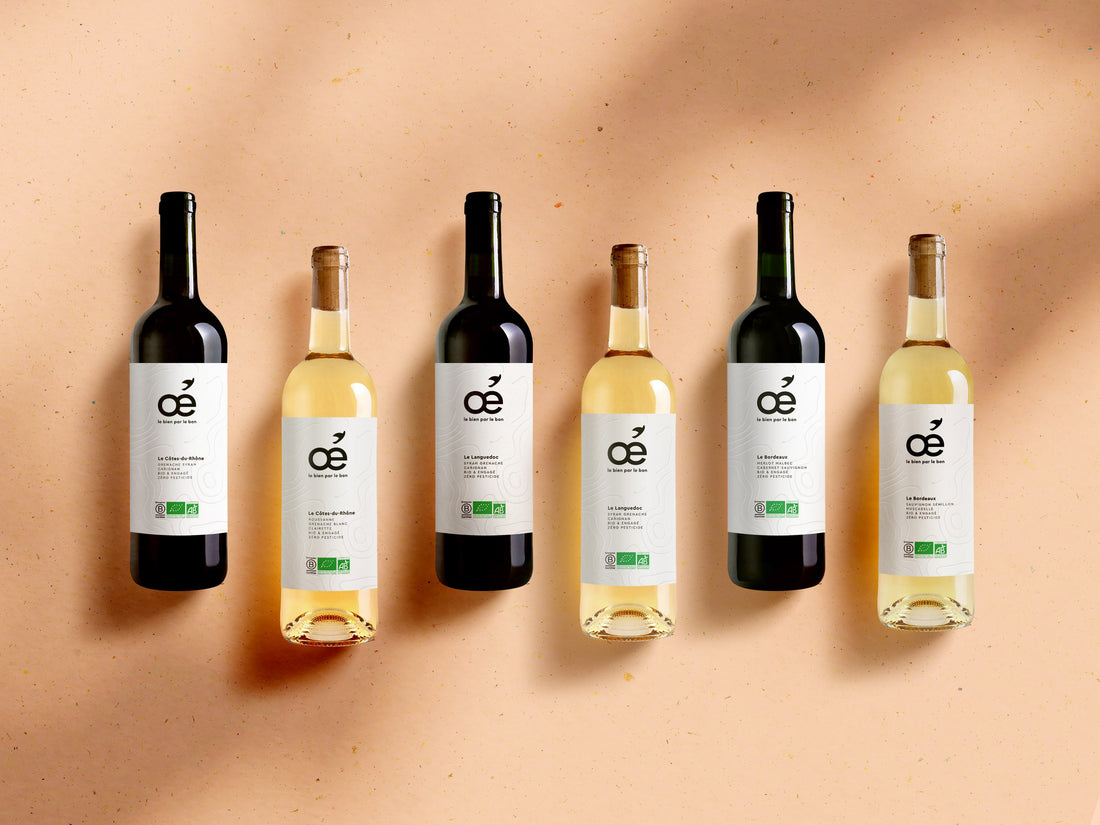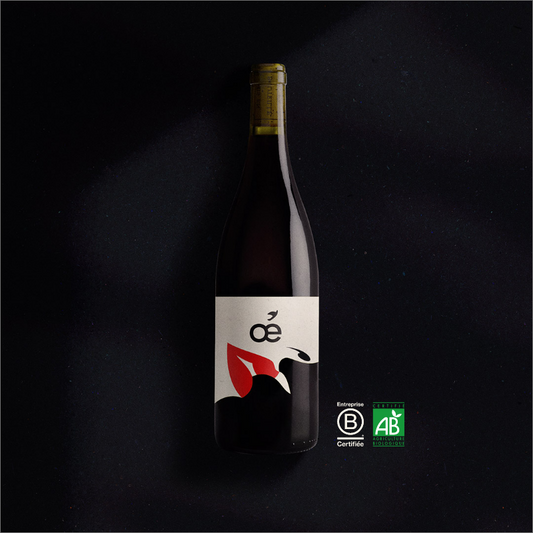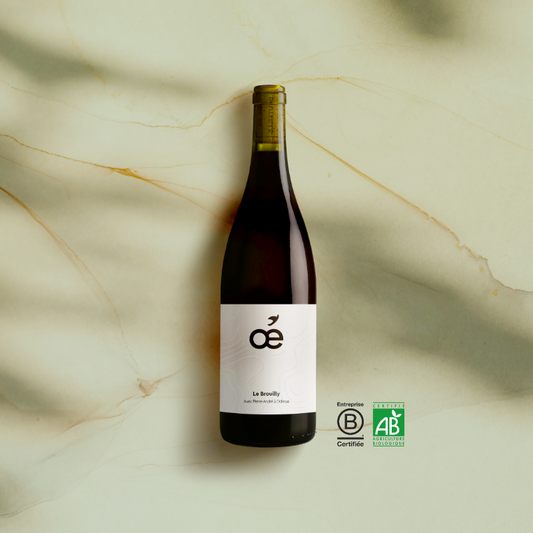An autograph, a signature, a stamp, all that we know well because we come across them on a daily basis. On the other hand, it is more difficult to know what hides behind the logo of a label. At Oé, all our wines are organic, good and committed, but what does that mean?
What is a good organic wine?
When it comes to good, you can trust us, every sip is a pleasure. Valérie our oenologist Oé selects, thanks to her developed palette, each cuvée so that it is unique, authentic and succulent. Of course, our best jury is you, and according to your feedback, Valérie is doing a good job with the Oé winegrowers because you like wines and let us know. So on behalf of the whole team, a big thank you ! Now let’s take a look at labeling together.
Organic wine labels
Wine labeling is very controlled, you can't do just anything and especially use just any logo, because behind a logo, there is a label.
Does the AB label speak to you? Yes, it is the French organic label for all food products. The European organic label may also tell you something, it is represented by a tree leaf made up of small stars (in reference to the European flag of course).
But then, what are they for? Labels are used to certify that a product is indeed organic and that it has been produced in accordance with precise specifications established by the certifying bodies (ecocert) . The good news is that since 2012, the AB label has revised its requirements upwards by also controlling the vinification . Until this reform, you could only enjoy a wine “ made from organic grapes ”, whereas today you can taste good organic wines , certified from head to toe (from the vine).
In addition to the certifying bodies , there are many associations and initiatives set up to promote organic products, such as the Nature & Progrès association . When the government also gets involved, it gives a good boost to organic and the Agence bio , created in 2001 by the Ministry of Agriculture , does everything possible to help organic to develop and reach our homes . glasses and on our plates.
Organic viticulture
Before our red Bordeaux arrives on your table, the grapes have made their way. It is sure, we are not organic overnight and even less wine, overnight. The conversion to organic lasts three years and to produce wine it can be the story of a few months like that of several years because after the harvest you have to vinify the grapes it can last a very long time for certain wines .
It all starts in the vineyards , the winegrowers ' garden, which they watch over day and night (they still sleep a little, we can reassure you). The vine needs a lot of care due to insect pests , nasty diseases and frost episodes , our favorite little plant is often well shaken.
In conventional agriculture , it is with chemical phytosanitary products that we solve all the problems. Of course, these products are effective, they are besides probably too much. By using pesticides and fungicides , the vine is protected against some of these enemies but the whole surrounding ecosystem is in danger. These products are very aggressive for soils, and nature suffers.

Organic farming helps both the vines and the environment . For this, organic farming relies on a responsible mode of production with fertilizers and natural fertilizers such as Bordeaux mixture , horn dung or even herbal preparations . Yes, why shouldn't the vine be entitled to its little herbal tea too?
Organic winemaking
Once the vines have been well cared for and have taken in the sun, the winegrowers are ready for the harvest . Manual harvesting or harvesting using harvesting machines, the two schools exist with their advantages and disadvantages. Every year we go to see our Oé winegrowers to do the harvest with them and it's always a great moment of pleasure and sharing!
Once the grapes are harvested, they are vinified to become good organic wines . To be certified organic , wines must meet a few criteria. The inputs used are very controlled and the certification also imposes maximum doses , particularly for sulphur . This is not to displease us because even if sulphites are very practical for stabilizing and preserving wine, in excess it destroys the aromas and above all it gives big headaches . A good organic wine has a low sulphate content , so it's a more responsible wine but also better for your health , not bad, isn't it?
In this article, we talk about sulfite-free wines
Winemakers also use native yeasts to ferment wine, and they avoid additives . As unbelievable as it may seem, some conventional wine producers add tannins , wood chips, and a whole list of things to modify and "enhance" the wine. Nothing very natural in all this, so to make good organic wine we are content to let the grape varieties , the terroir and the winemaker's know-how do the talking .
Discover our selection of red wines , rosé wines and white wines , from organic and sustainable agriculture .





